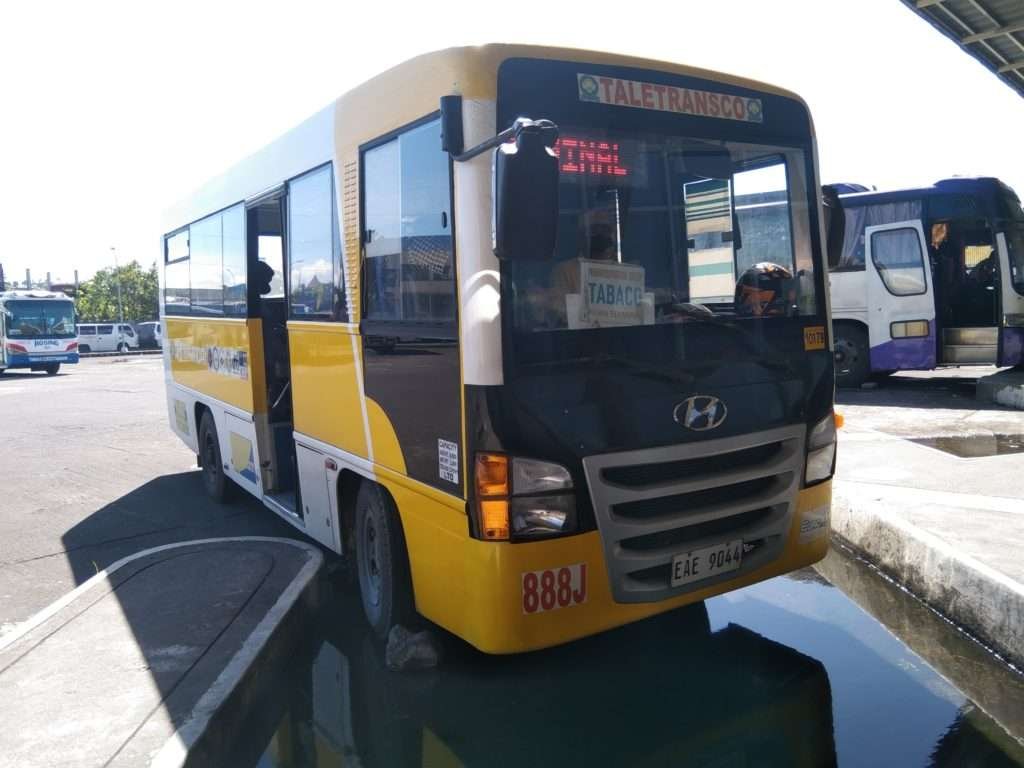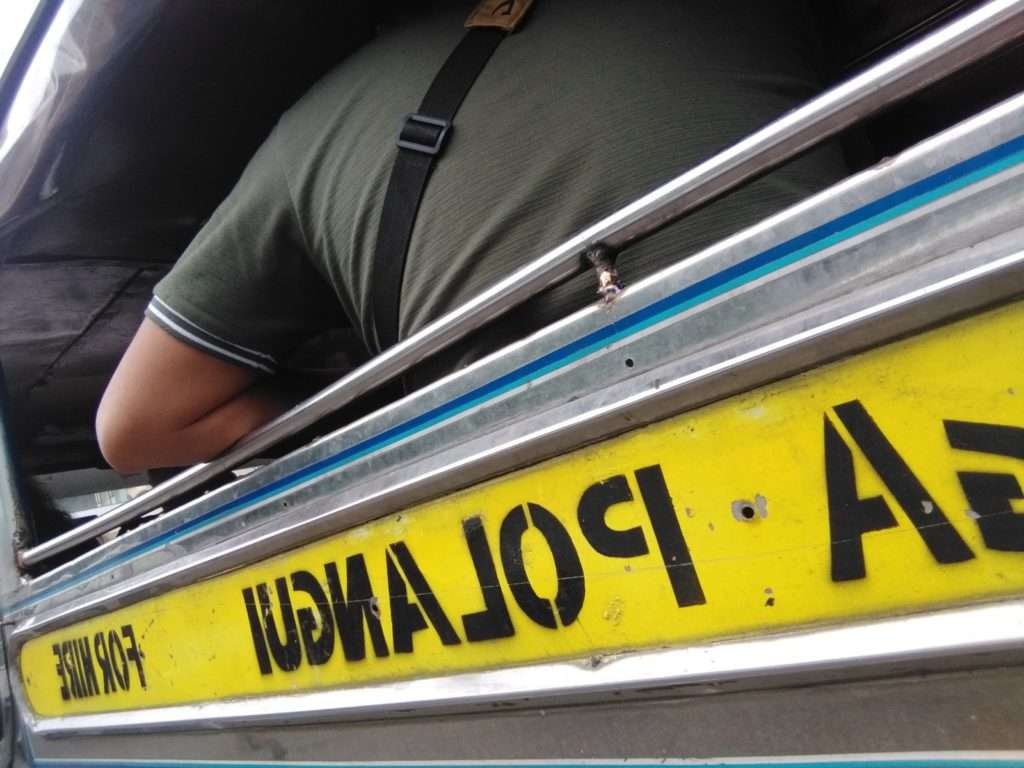Marking the Pinoy jeepney lifeline

The government is set to phase out old jeepneys for modernized public transportation. Operators of old jeepneys particularly with fifteen years old or older engines can only continue to operate until March 31, 2023. Then, their vehicles get banned from roads and highways.
The deadline comes from the implementation of the government’s Public Utility Vehicle Modernization Program (PUVMP). This aims to ensure public safety and provide better service to commuters. This program also serves as a mitigation strategy to lessen the effects of climate change.

Marking the Pinoy jeepney lifeline
Bing, not his real name, from Guinobatan, Albay, is a 50-year-old driver of a 23-seater traditional jeep. Every day, he starts his first trip at six in the morning from Guinobatan to Legazpi City. Before starting his first trip at 6 AM from Guinobatan going to Legazpi City, he would make sure that his jeepney is in good condition. Then, he starts driving commuters to their destination.
Having to pay Php 500 for the boundary, Bing gets to take home approximately the same amount at the end of the day. With the onset of plans to modernize the public transportation system in the country, Bing, along with a large number of traditional jeep drivers, have to deal with its impacts. Meanwhile, they strive to make ends meet.
Syempre mawaran ako kaan ning jeep na ida-drive, paano san ang hanap buhay ko, ano ang ibubuhay ko sa pamilya ko? [ I won’t be having a jeepney to drive anymore, what will happen to my livelihood, and what will I feed to my family?]
However, Bing admitted that he is unsure if the government’s plan to phase out old jeepneys is true. He cites that they haven’t heard any updates about it.
Kaulay na, mga 2020, 2021 phase out na ngaya, 2022 phase out… pirmi nagasa- bi na phase out kina hin-di man natuloy. [It’s been so long, by 2020, 2021 they said it will be phased out, then by 2022 again… they are always saying to phase out but then it didn’t happen.]
Even Though Bing already tried to ride a modernized jeepney, he still thinks that the old jeepney is much better. He knows that this is where he earns money. He wishes that the government disseminates clear information and plans for what will happen to old jeepney drivers.
Bing thinks that, as early as now, the government should start the preparation of the program, especially since March is just around the corner. He feels dismayed because they don’t see any progress in the plan. Aside from that, he also feels afraid that maybe it might just shock them once it’s there.
Transitioning from traditional to modern jeepneys
On the other hand, Mr. Jimmy Banalingbing, 32, from Malilipot Albay, drives a modernized jeepney from Tabaco to Legazpi for 21 months. The modernized jeep has twenty-four seating capacities and ten standing capacities, for a total of thirty-four passengers. These vehicles require at least a Euro 4-compliant engine or an electric engine to lessen pollution. It has CCTV cameras, an automated fare collection system, speed limiters, and GPS monitors.
Way back, Banalingbing was once an old jeepney operator. However, when SUV vans started to operate, it affected his everyday earnings. This forced him to stop driving old jeepneys and moved to Manila where he worked as a cook. However, when the pandemic struck, Banalingbing had no choice but to go back to Albay. And, that was when he had the opportunity to apply as a driver of a modernized jeepney. It was the only one allowed to travel or operate at that time.

Dae akong choice kundi mag-apply para kahit papano may pagkakakitaan. [I don’t have a choice but to apply so at least I could earn something.]
From an old jeep operator, and now a modernized jeepney driver, he receives a basic salary of Php 345 per day. This, on the other hand, he only receives on a monthly basis. Banalingbing shared why he likes driving a modernized jeepney compared to an old jeep.
Ay digdi kunyang kami ba- sic, ang per day baga digdi 345…pero ang pagkuha me petsa sinko buda petsa bente kang bulan. [It’s basic here, our per day wage is Php 345…we get at during 5 and 25’s of the month.]
Currently, 220,000 jeepney units operate throughout the country, while in Albay, 23 modernized jeepneys travel in Tabaco to Legazpi route. Banalingbing would start his first trip to Legazpi at 6 AM going to Tabaco and end his day after his last 9:30 PM trip. Each day, he’d travel back and forth his route around four to five times.
Ang problema lang digdi [Ta- baco] su mga luma pang jeep yaraon man giraray tapos minsan nagpapa-suruway na sa byahe ta sinda diit na sana ang nakukuhang pasahero. [The problem here (Tabaco) is that the old jeep competes with modern jeepney be- cause they get less passenger.]
Mr. Banalingbing encourages the old jeepney drivers to apply as modernized jeepney drivers if ever all of the old jeepneys phase out this year.
Mayye, not her real name, is a student that commutes from Malilipot to Legazpi City to go to school. As a student, she wants to experience comfort while commuting and she experienced it in a modernized jeepney. However, at the same time, she claims that the fare in a modernized jeepney costs higher compared to traditional jeepneys. This is why based on practicality she prefers to ride in an old jeepney.
Sa convenience ang pag-uusapan wala namang pagkakaiba sa old jeep at modern jeep kasi halos parehas naman gusto punuan. [In terms of convenience there is no difference between an old jeep and a modern jeep, both want to overpack the jeep.]
She added that convenience is not really present when it comes to the transport system in the Philippines. For Bing, a traditional jeepney driver, and for Jimmy, a modern jeepney driver, despite the varying differences in the way their work operates every day, the goal of their job all leads to the same reason at the end of the day— to safely drive their passengers, and bring food to the table.
Whichever wins the Philippine roads in the years to come, the primary hope is that while we pursue moving forward to modernity, not one jeepney driver would be left behind, and not a single remnant of our Pinoy culture would be forgotten.
Karen is a person that can talk nonstop but she's never assertive. This gal has an overflowing imagination and the only time that she's silent (except of course when she's asleep) is when she is mentally plotting a story. Through writing, she gets to express her inner thoughts and unveil her imagination. She enjoys reading books but oftentimes fall asleep while doing so, reading Wattpad stories, and watching Korean dramas and anime.






